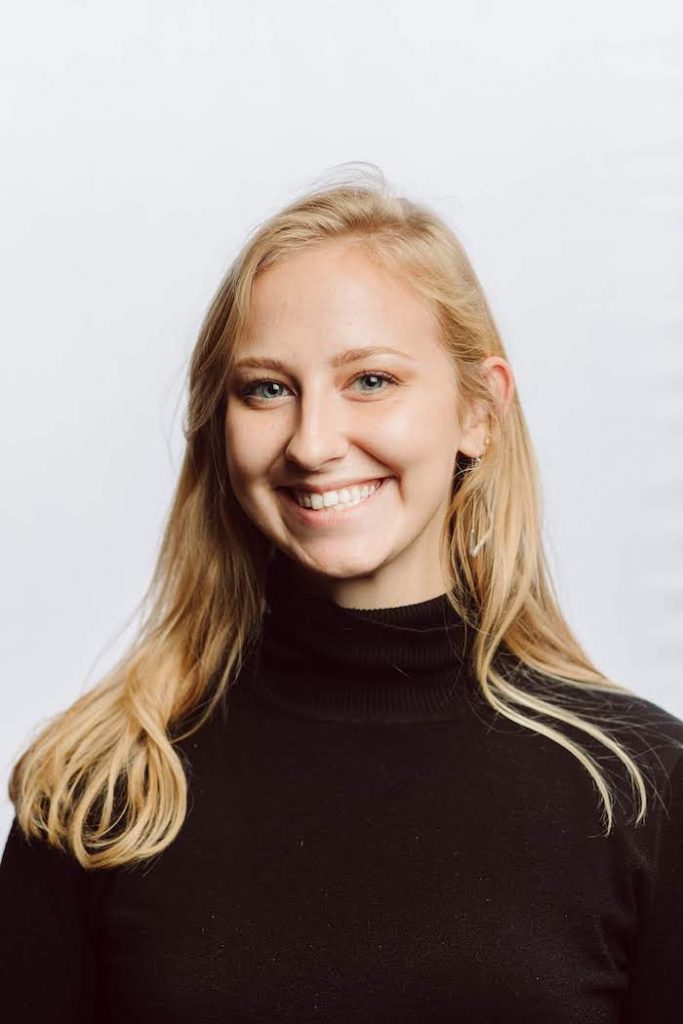From Classroom to Cornfield: A Recap of Summer Research
This summer in Ohio, in the middle of a farmer’s cornfield, Jennifer Noonan ’21 was surveying butterfly populations and nectar availability when she happened upon an animal skeleton. To her surprise, she could actually identify it—thanks to last year’s course in mammalogy. With a sunhat shading her face and a clipboard in hand, she picked at the bones with the eraser-side of her pencil and made her best guess. “It has to be an eastern chipmunk.”
Noonan couldn’t have anticipated that she’d spend her summer calling up local farmers and asking for permission to traipse across their properties looking for butterflies, but her plans weren’t the only thing that changed because of COVID-19. Many companies and organizations couldn’t adapt their internships and research projects for a remote work environment, so several Gordon professors got creative to make summer research possible (and safe) for more than a dozen of their students.
From their makeshift labs right here in Wenham all the way to Ohio, and research projects ranging from surveying butterflies to shining lasers, here is a sample of summer student research.
Monitoring Butterfly Populations in Ohio
Noonan, a biology major, was a student who redesigned her project to fit the demands of COVID-19 with the help of Professor of Biology Dr. Greg Keller and Assistant Professor of Biology Sam Mason ’15. The two biology professors oversaw her research from a distance through biweekly Zoom meetings.

A typical day of research, for Noonan, included surveying local cornfields and forest edges for butterflies and nectar. Every day, she walked about five kilometers, revisiting the same thirty paths (called transects) four times throughout the field season. For the first three walk-throughs, she counted butterflies. On the fourth time, she took note of all nectar-bearing plants. Over time, she added plants along each path to see how butterfly populations were affected by nectar availability and fragmentation.
The physically demanding project required Noonan to hike through cornfields and do extensive amounts of work by herself. And yet her unique, remote circumstance helped her to take on more responsibility and thus gain more experience and confidence. She learned to make purchase orders, select plants for use in the field and ask local farmers for permission to walk their land. “It was really good to get hands on field experience,” says Noonan. “I’m really grateful for my professors. This is the first time I am doing research that eventually—well hopefully—will be published.”
Studying Foreigner-directed Speech in Massachusetts
While Noonan surveyed butterflies in Ohio, psychology major Jaeyoung Kum ’22 worked with Dr. Susan Bobb on the concept of “foreigner-directed speech” (FDS) from his home in South Hamilton, MA. FDS is a strategy in communication in which native speakers of a language make accommodations for non-native speakers in conversation. Accommodating others through language happens in a variety of situations and not just when speaking to foreigners. Kum explains, when talking to a professor, “I would change the way I speak to be a lot more refined and educated than if I was talking to, for example, a six-year-old.”
When a native speaker is in conversation with a non-native speaker, they will oftentimes talk in a higher pitch, slow the rate of their speech and use high-frequency (commonly used) words. But before Bobb and Kum could begin their official survey to see how native-speakers use and understand foreigner-directed speech, they had to get approval from the Institutional Review Board (IRB), a committee that certifies their research is ethical. So, Kum worked meticulously on the IRB proposal, performed background research and helped to develop the research questionnaire.
Compared to classes Kum has taken, where he studies for a test and then has trouble retaining the information, he feels that participating in research firsthand has led to greater understanding and interest in the material. “You learn a lot more when you really take ownership of what you’re learning,” he says. “I know a lot of this information is going to stick in my head.”
With upwards of 12 students working on research projects this summer, Noonan and Kum represent only a small picture of the scholarly work that took place. To name a few others—physics major Benjamin Martin ’22 tapered optical fibers to measure resins to be used for optical propulsion with Dr. Oleksiy Svitelskiy. Psychology major Jinyung Suh ’22 investigated the impact of depression on visual perception with Dr. Daniel Norton. Math major Abraham Holleran ’22 tested a new kind of voting method known as “cyclical voting” with Dr. Karl-Dieter Crisman. And physics majors Nate Quattrochi ’23 and Matthew Yoder ’21 tested elasticity by measuring the ability of crystals to stretch and compress with Svitelskiy.
Research may look different during a pandemic, but these students prove that the right opportunities can still arise when a person is willing to take on new circumstances and a higher level of responsibility.
Learn more about research opportunities at Gordon.
Article by Anna Kinkade ’21, psychology and communication arts
 The Bell
The Bell